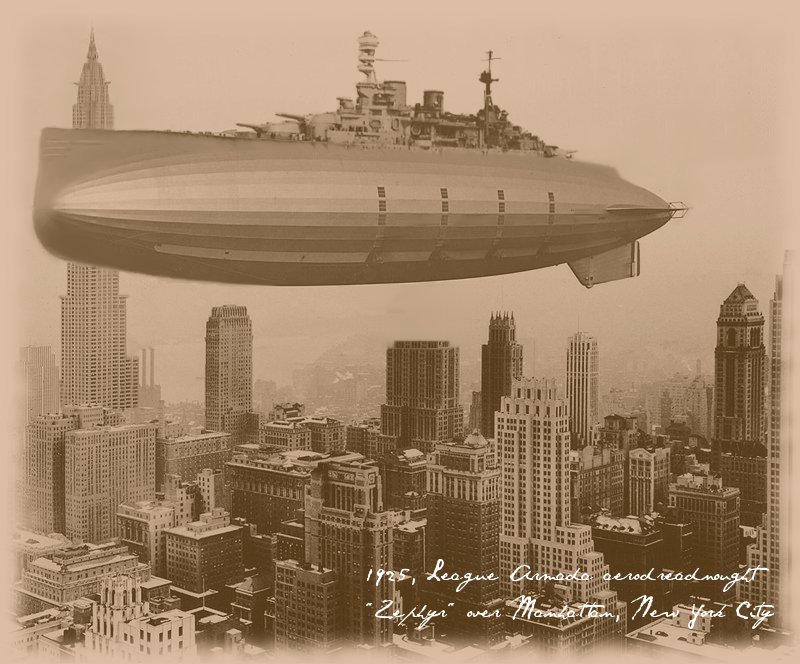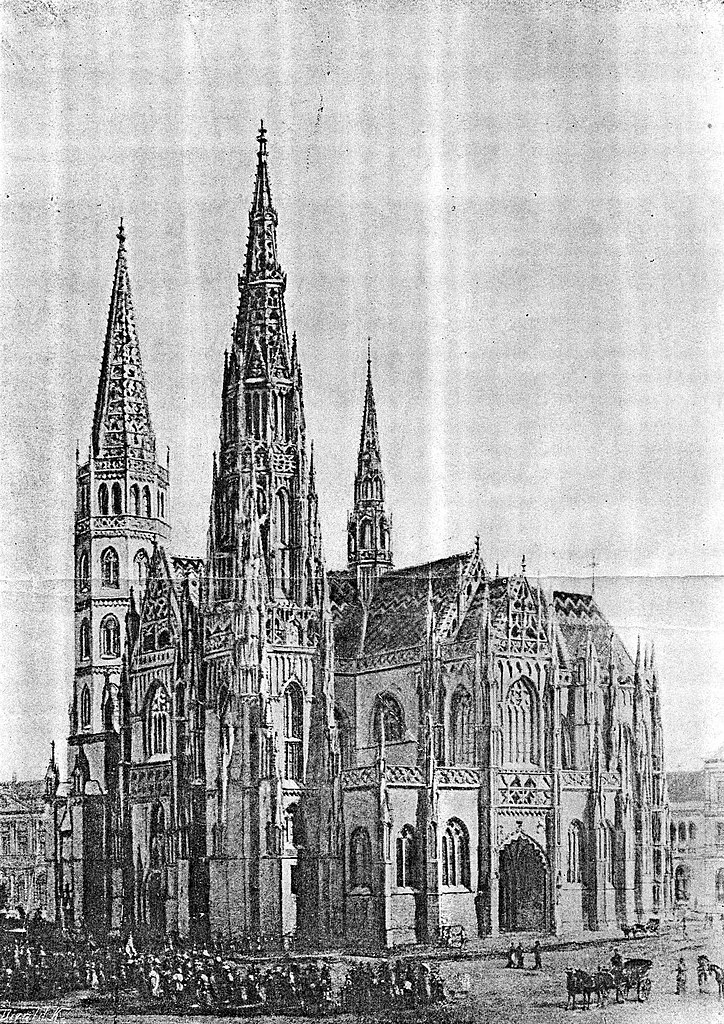Buildings, monuments, statues, tombs, etc. Sort of on the line of the Seven Wonders, which were two tombs, two statues, a temple, fancy landscaping, and a lighthouse.
I'll start off with some tombs.
CAESAR'S COLUMN
American Plutocracy Falls sector, variant 1755
Location: former Central Park, New York City, Republic of Eastern America.
Rising to a height of some 300 feet, Caesar's column is in fact a pyramid, and a truncated one at that. A massive structure composed mostly of cement, it is in fact an enormous tomb, like the pyramids of egypt, but unlike them far more democratic in its contents: rather than a single God-King and perhaps a few servants, it contains, embedded in it like raisins in a muffin, the mortal remains of some half a million human beings.
After the Populist-Anarchist revolutionaries took New York from the Plutocracy, there was need to dispose of nearly a quarter million bodies in a hurry: the notion to entomb them in concrete and kill two birds with one stone by creating a grim monument to the fall of the Plutocracy was proposed by revolutionary leader Caesar Lomellini, after which the structure is named. Another quarter million were added in the subsequent purges and the disposal of "useless mouths" during next year's famine.
The structure was never completed due to excessive settling and the increasing difficulty of bringing bodies and building equipment up its steep sides (plus a severe concrete shortage), leaving it in it's current truncated-pyramid shape. It is nowadays in rather poor shape: aside from pockmarking by cannon fire during the Populist-Anarchist intercine conflict seven years after the fall of New York and further artillery damage during the taking of the city by the Christian-Marxist Restorationists 16 years after that, continued settling has caused cracks to form in the structure, and the decay of the bodies within has opened voids which have put further stess on it. Large pieces of (not first-quality) concrete have cracked and peeled away, up to the size of a bus, exposing human remains.
The Christian-Marxists have attempted to preserve it as a monument to the evils of the Anarchist-Popularists, and it is currently almost concealed by a mass of protective scaffolding: locked fences keep the public from approaching closer that 20 meters from its base. However, since the restoration of democratic government some five years ago, public opinion has turned towards the option of breaking it up and burying those emtombed within: given the sheer expense involved in stabilizing the structure, it seems likely the conservationists will lose the political battle, and New York (after some very bad decades, returning at last to the status of one of America's leading cities) will lose one of it's biggest tourist draws.
Bruce
I'll start off with some tombs.
CAESAR'S COLUMN
American Plutocracy Falls sector, variant 1755
Location: former Central Park, New York City, Republic of Eastern America.
Rising to a height of some 300 feet, Caesar's column is in fact a pyramid, and a truncated one at that. A massive structure composed mostly of cement, it is in fact an enormous tomb, like the pyramids of egypt, but unlike them far more democratic in its contents: rather than a single God-King and perhaps a few servants, it contains, embedded in it like raisins in a muffin, the mortal remains of some half a million human beings.
After the Populist-Anarchist revolutionaries took New York from the Plutocracy, there was need to dispose of nearly a quarter million bodies in a hurry: the notion to entomb them in concrete and kill two birds with one stone by creating a grim monument to the fall of the Plutocracy was proposed by revolutionary leader Caesar Lomellini, after which the structure is named. Another quarter million were added in the subsequent purges and the disposal of "useless mouths" during next year's famine.
The structure was never completed due to excessive settling and the increasing difficulty of bringing bodies and building equipment up its steep sides (plus a severe concrete shortage), leaving it in it's current truncated-pyramid shape. It is nowadays in rather poor shape: aside from pockmarking by cannon fire during the Populist-Anarchist intercine conflict seven years after the fall of New York and further artillery damage during the taking of the city by the Christian-Marxist Restorationists 16 years after that, continued settling has caused cracks to form in the structure, and the decay of the bodies within has opened voids which have put further stess on it. Large pieces of (not first-quality) concrete have cracked and peeled away, up to the size of a bus, exposing human remains.
The Christian-Marxists have attempted to preserve it as a monument to the evils of the Anarchist-Popularists, and it is currently almost concealed by a mass of protective scaffolding: locked fences keep the public from approaching closer that 20 meters from its base. However, since the restoration of democratic government some five years ago, public opinion has turned towards the option of breaking it up and burying those emtombed within: given the sheer expense involved in stabilizing the structure, it seems likely the conservationists will lose the political battle, and New York (after some very bad decades, returning at last to the status of one of America's leading cities) will lose one of it's biggest tourist draws.
Bruce

